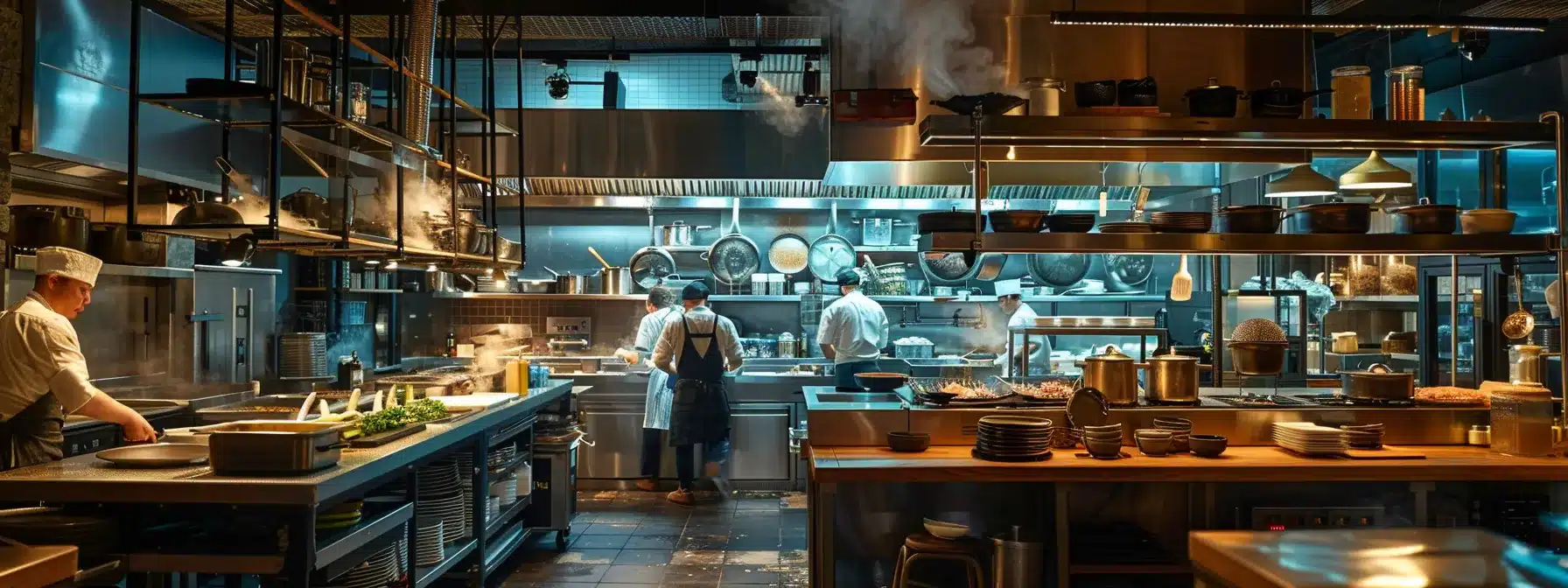Many restaurant owners overlook the power of email marketing metrics, yet they play a crucial role in enhancing service quality and driving revenue. By understanding demand and tracking essential newsletter metrics with accuracy and precision, restaurants can identify successful strategies and areas for improvement. This article will cover key email marketing metrics to monitor, techniques for effective analysis, and actionable strategies to maximize ROI. Readers will learn how to address challenges in their email marketing efforts, ultimately increasing their restaurant’s profitability.
Key Takeaways
- analyzing email metrics boosts restaurant profitability and customer engagement
- utilizing segmentation allows for personalized marketing and higher conversion rates
- effective training on email strategies enhances staff performance and campaign outcomes
- optimizing send times increases email engagement and drives customer traffic
- incorporating customer feedback improves email content and strategy effectiveness
Understanding the Role of Email Marketing Metrics in Restaurant ROI

Email marketing metrics play a crucial role in enhancing restaurant profitability. By effectively analyzing these analytics, restaurants can identify growth opportunities and improve customer lifetime value. Addressing challenges such as risk management and optimizing the communication channel associated with capturing email addresses is essential for maximizing ROI. The following sections will explore these key areas in detail.
The Impact of Email Campaigns on Restaurant Profitability
Email campaigns significantly influence restaurant profitability by enhancing customer engagement and retention. By analyzing metrics such as email open rates and click-through rates, restaurants can adjust their communication frequency to better suit customer preferences, ultimately reducing churn rate. Furthermore, integrating these insights with accounting software and payroll data can help identify the financial impact of customer interactions, leading to more informed decision-making and improved ROI.
The importance of effective email marketing metrics encompasses several key elements:
- Understanding customer preferences and adjusting frequency of communication
- Reducing churn rate through targeted offers and promotions
- Leveraging data from accounting software for comprehensive financial analysis
- Integrating payroll management practices to further enhance profitability
Analyzing Email Metrics for Growth Opportunities
Analyzing email metrics presents valuable growth opportunities for restaurants by enhancing brand awareness and reducing operating expenses. Leadership teams can identify effective strategies for engaging customers and mitigating risks related to email spam, which can otherwise diminish the promotional impact of campaigns. By fostering a culture of data-driven decision-making, restaurants can tailor their email marketing efforts to address customer preferences, ensuring higher engagement rates and ultimately improving return on investment.
Overcoming Challenges in Restaurant Email Marketing
Overcoming challenges in restaurant email marketing requires a well-defined marketing strategy that integrates insights from various channels, including social media. By creating compelling calls to action and optimizing their email list segmentation, restaurants can engage customers more effectively, encouraging higher response rates and conversions. Additionally, streamlining inventory management through data collected from email campaigns allows restaurants to better understand their customer preferences, leading to more focused promotions.
- Develop a clear marketing strategy that includes social media interaction.
- Create effective calls to action in email campaigns.
- Segment email lists to tailor messages for specific customer groups.
- Utilize email metrics to inform inventory management and promotional efforts.
To improve ROI, restaurants must know their email marketing metrics. The next step is clear: they need to track what truly matters.
Essential Email Marketing Metrics Restaurants Should Track

Open rates gauge initial engagement, providing insight into how well email subjects capture attention. Click-through rates measure content effectiveness, indicating how many recipients interact with links. Conversion rates reflect the success of turning subscribers into customers, while unsubscribe rates help maintain a healthy subscriber list. Finally, bounce rates ensure email deliverability, crucial for sustained customer retention strategies. Each of these metrics plays a vital role in maximizing ROI through effective restaurant email marketing analysis.
Open Rates: Gauging Initial Engagement
Open rates are a critical metric in evaluating the performance of an email marketing campaign, as they indicate the initial engagement level of customers with the content. A high open rate suggests that the subject lines and previews effectively attract attention, while a low open rate may indicate the need for revisions in messaging or targeting. By collaborating with reliable vendors to enhance email strategies, restaurants can utilize open rates to refine their referral marketing efforts, address potential bounce rate issues, and ultimately boost customer interactions.
- Open rates indicate initial engagement with an email marketing campaign.
- High open rates suggest effective subject lines and previews.
- Collaboration with vendors can enhance overall email strategies.
- Managing bounce rates is essential for maintaining customer interest.
- Refined referral marketing efforts can lead to higher engagement.
Click-Through Rates: Measuring Content Effectiveness
Click-through rates (CTR) serve as an essential formula for measuring the effectiveness of email campaigns by indicating how many recipients clicked on links within the email campaign. A heightened CTR reflects successful content that resonates with the audience, often translating to increased cash flow for the restaurant. For instance, if a restaurant emails a special promotion, tracking the CTR from both mobile and desktop computer users can provide insights into customer preferences and help refine future email strategies.
- Click-through rates measure engagement levels in email campaigns.
- A higher CTR signifies effective content that will drive cash flow.
- Tracking CTR on both mobile and desktop computers offers valuable insights.
- Analyzing CTR allows for better targeting in future email campaigns.
Conversion Rates: Turning Subscribers Into Customers
Conversion rates are a vital metric in restaurant email marketing, as they directly measure the effectiveness of transforming subscribers into paying customers. By analyzing these rates, restaurants can gain insights into customer preferences and engagement levels, allowing them to tailor their offers and improve overall profit margin. Utilizing robust email marketing software can help streamline this process, enabling data collection and analysis that informs future campaigns and aligns with customer expectations.
Unsubscribe Rates: Maintaining a Healthy Subscriber List
Unsubscribe rates are a critical indicator of a restaurant’s mailing list health and overall reputation in the market. High rates of unsubscriptions may signal that the content does not resonate with the audience or that the frequency of emails is unmanageable, prompting a need for competitor analysis and adjustments in logistics. By utilizing tools like Omnisend, restaurants can better track these metrics, allowing them to refine their email communication strategies and ensure that subscriber engagement remains strong, ultimately supporting efforts to increase ROI.
Bounce Rates: Ensuring Email Deliverability
Bounce rates are a critical metric for ensuring email deliverability in restaurant email marketing. A high bounce rate typically indicates issues with the server configuration, email client settings, or a lack of targeted advertising practices, which can hinder effective communication. By addressing these elements, restaurants can improve their retention rate and enhance overall campaign performance, ultimately leading to a more profitable marketing strategy.
Now that the key metrics are clear, it is time to understand how to analyze them. Discovering the right techniques will reveal deeper insights into your email performance.
Techniques for Effective Analysis of Email Metrics

Setting clear goals for email campaigns establishes a focused mindset that drives income and brand growth. Utilizing segmentation ensures personalization of messages, enhancing customer engagement. Applying A/B testing allows optimization of email strategies, while interpreting data with analytics tools informs decision-making and policy adjustments. These techniques collectively maximize ROI through effective analysis of email metrics.
Setting Clear Goals for Email Campaigns
Setting clear goals for email campaigns is a fundamental strategy in maximizing ROI for restaurants in the foodservice industry. Establishing specific objectives not only clarifies the communication approach but also enables tracking and analysis of performance metrics, such as engagement and conversion rates. For instance, integrating insights from influencer marketing can help tailor promotional content that resonates with audiences while considering price sensitivity, thus enhancing overall effectiveness and aligning campaigns with customer expectations.
Utilizing Segmentation to Personalize Messages
Utilizing segmentation in email marketing is essential for personalizing messages that resonate with the target audience. By understanding customer preferences and behaviors, restaurants can tailor their communications, leading to enhanced engagement and higher conversion rates. Additionally, adhering to guidelines such as the General Data Protection Regulation (GDPR) ensures that resource allocation is optimized while maintaining compliance, ultimately supporting more effective email campaigns that drive ROI.
Applying a/B Testing for Optimization
Applying A/B testing in restaurant email marketing campaigns allows for practical optimization of communication strategies to improve engagement and net income. By comparing two versions of an email—such as different subject lines or content formats—restaurants can identify which approach resonates better with their audience on both desktop and mobile devices. This method not only enhances the effectiveness of marketing automation efforts but also contributes to building a stronger market share by refining messaging that aligns with customer preferences, ultimately leading to increased overall profitability.
Interpreting Data With Analytics Tools
Interpreting data with analytics tools is essential for restaurants aiming to maximize ROI through their email marketing metrics. These tools provide critical insights into customer behavior, allowing restaurants to enhance their customer service and better understand customer satisfaction levels. By analyzing how different marketing channels perform, restaurants can gain a competitive advantage, tailoring their strategies to not only meet customer preferences but also to enhance engagement with targeted offers that resonate with their audience.
Understanding email metrics lays the foundation for success. With this knowledge, the next step is to discover how to turn insights into profit through email marketing.
Strategies to Enhance ROI Through Email Marketing

Crafting engaging content is vital for boosting interaction and increasing web traffic. Additionally, optimizing send times can enhance the impact of campaigns, while incorporating special offers drives sales effectively. Encouraging customer feedback helps maintain system hygiene and resource allocation, ultimately supporting continuous improvement. Each of these strategies will be explored in detail to enhance ROI through effective email marketing.
Crafting Engaging Content to Boost Interaction
Crafting engaging content is essential for restaurants looking to boost interaction through email marketing and maximize their ROI. By focusing on strong storytelling and appealing visuals, restaurants can capture the attention of their audience effectively. For instance, showcasing interior design elements or food presentations in emails can transform the way potential customers perceive the dining experience, making them more likely to engage. This approach, combined with data analysis techniques that assess customer preferences, can significantly reduce marketing expenses while enhancing overall content marketing strategies.
| Strategy | Impact on Engagement | Data Analysis Role |
|---|---|---|
| Storytelling in Content | Builds emotional connection | Identifies themes resonating with the audience |
| Visuals of Interior Design | Creates appealing layout | Tracks click rates on image-heavy emails |
| Promoting Special Offers | Drives action among recipients | Analyzes effectiveness of different offers |
Optimizing Send Times for Maximum Impact
Optimizing send times for restaurant email marketing campaigns can significantly enhance the overall value delivered to subscribers and improve return on investment. By analyzing customer engagement data and workflow patterns, restaurants can identify peak times when their audience is most likely to open and interact with emails. For instance, sending promotions during lunchtime or early evening can lead to higher engagement rates, as it aligns with when potential customers are considering dining options, thereby increasing the likelihood of driving traffic and leads to the restaurant.
Incorporating Special Offers to Drive Sales
Incorporating special offers into email marketing campaigns is a powerful strategy for driving sales and enhancing customer engagement in the restaurant industry. By leveraging elements such as loyalty programs, restaurants can effectively reduce their customer acquisition cost while encouraging repeat visits. Implementing well-timed promotions aligned with effective pricing strategies not only increases accessibility for customers but also creates a sense of urgency, motivating them to take action. This approach can lead to improved ROI as customers respond positively to exclusive deals, fostering long-term relationships and brand loyalty.
- Leverage loyalty programs to build repeat customers.
- Align special offers with effective pricing strategies.
- Create a sense of urgency with time-sensitive promotions.
- Enhance accessibility to attract a wider audience.
- Measure the impact of special offers on sales and ROI.
Encouraging Customer Feedback for Improvement
Encouraging customer feedback is essential for restaurants aiming to enhance their email marketing strategies and maximize ROI. By actively seeking opinions on customer behavior and preferences, the chief executive officer can gain invaluable insights that drive innovation and customer satisfaction. Utilizing tools compatible with major email clients like Apple Mail allows for easy collection and analysis of feedback, leading to informed decisions in marketing adjustments and operational improvements.
- Seek feedback to understand customer behavior.
- Engage with customers to gain insights for innovation.
- Utilize email tools compatible with Apple Mail for efficiency.
- Implement changes based on customer feedback to improve ROI.
- Involve the chief executive officer in utilizing feedback effectively.
Email marketing works when done right. Let’s look at restaurants that mastered this craft and reaped the rewards.
Case Studies of Successful Restaurant Email Campaigns

Targeted email strategies have proven effective in increasing ROI for restaurants when supported by comprehensive research and usability studies. This section discusses lessons learned from restaurants that have effectively leveraged email marketing metrics and social media marketing insights to enhance their marketing communications. Additionally, it highlights innovative approaches in email marketing that demonstrate successful recruitment of customer engagement.
Increasing ROI With Targeted Email Strategies
Utilizing targeted email strategies enables restaurants to increase ROI by enhancing relevance to the consumer. For example, a restaurant that integrates its mobile app data can identify customer preferences, allowing for personalized offers that resonate with diners, thereby driving engagement. By analyzing the average response rate to these tailored campaigns, establishments can refine their approach, ensuring that communication aligns with consumer expectations and maximizes revenue potential.
Lessons From Restaurants That Leveraged Metrics Effectively
Lessons learned from restaurants that effectively leveraged email marketing metrics highlight the importance of integrating cloud computing technologies for efficient data management. For instance, one establishment utilized customer behavior analytics to implement targeted coupon campaigns, significantly boosting customer engagement and overall sales. Additionally, investing in staff training on interpreting net promoter scores enabled the team to enhance customer service and productivity, ultimately leading to improved customer satisfaction and repeat business.
Innovative Approaches to Email Marketing in the Industry
Innovative approaches to email marketing have become essential for restaurants aiming to enhance their customer experience and maximize ROI. By utilizing advanced segmentation strategies, restaurants can personalize their marketing campaigns, resulting in higher open rates and improved engagement metrics. Additionally, incorporating feedback loops helps refine performance indicators, such as customer preferences and behavior patterns, ensuring that future emails remain relevant and impactful.
Success in email marketing is never final. Restaurants must keep evolving, learning from each campaign to sharpen their edge and grow stronger.
Implementing Continuous Improvement in Email Marketing

Implementing continuous improvement in email marketing involves establishing regular reviews of email performance to ensure strategies remain effective. Training team members on best practices enhances audience segmentation, ensuring communications resonate. Additionally, adapting to industry trends and customer preferences can significantly reduce turnover, reinforcing compliance with marketing laws that govern engagement.
Establishing Regular Reviews of Email Performance
Establishing regular reviews of email performance is crucial for enhancing the effectiveness and efficiency of restaurant email marketing campaigns. By analyzing metrics such as open rates and conversion rates, restaurants can gain insights into customer loyalty and adjust their autoresponder strategies accordingly. This process not only helps identify successful elements of past campaigns but also uncovers areas for improvement, ultimately leading to better employee benefits through increased sales and customer retention.
Training Team Members on Best Practices
Training team members on best practices in email marketing is essential for maximizing profit through effective analysis of restaurant email marketing metrics. By equipping staff with skills in upselling techniques and web analytics, restaurants can improve their ability to measure campaign performance accurately. Implementing training programs that focus on the percentage of successful conversions and customer engagement rates enables the team to develop strategies that align with overall business objectives.
| Training Focus | Expected Outcome | Metrics to Measure |
|---|---|---|
| Upselling Techniques | Increased Average Order Value | Percentage of Upsell Success |
| Web Analytics | Better Campaign Insights | Open and Click-Through Rates |
| Conversion Strategies | Higher Customer Retention | Customer Re-Engagement Percentage |
Adapting to Industry Trends and Customer Preferences
Adapting to industry trends and customer preferences is essential for restaurants aiming to enhance their email marketing strategies. By leveraging restaurant email marketing automation tools, establishments can quickly analyze consumer behavior and tailor their campaigns accordingly. For instance, tracking seasonal dining trends can inform targeted promotions, ensuring that email content resonates with patrons’ current interests and needs, ultimately driving higher engagement and improved return on investment.
Conclusion
Maximizing ROI through effective analysis of restaurant email marketing metrics is crucial for driving profitability and ensuring customer engagement. By closely monitoring key metrics such as open rates, click-through rates, and conversion rates, restaurants can refine their marketing strategies to better meet customer preferences. Implementing targeted campaigns and leveraging customer feedback can directly enhance sales while minimizing churn. Ultimately, a data-driven approach empowers restaurants to foster lasting relationships with patrons, making email marketing a vital component of their overall strategy.





